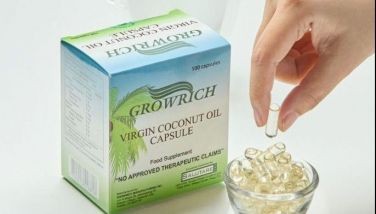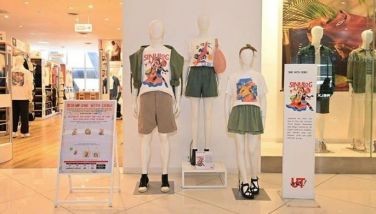Pearly gates
CEBU, Philippines - Diamonds may be a girl's best friend, but so are pearls. They represent beauty and elegance, simplicity as well as romantic sophistication that can be used for all occasions.
During a recent intimate gathering at The Tinder Box, hosted by owners Marlene and Aziza Mondoñedo, we met Laetitia Meriguet, retail ambassador of Jewelmer – the Philippines' main producers of South Sea Pearls, and took notes on some interesting facts about pearls.
There are two types of pearls: the natural and the cultured. Natural pearls occur when a tiny sea creature or rock ends up inside an open oyster. They are often irregular in shape and tend to be not so perfectly round. They are very rare and quite expensive.
Cultured pearls come into being when man gives nature what you might describe as a little help. Pearl farmers deliberately implant an irritant—usually a mother-of-pearl bead—in a mollusk. The living creature builds layer upon layer of nacre around the bead until the growth resembles the familiar gem we know as a pearl.
Cultured pearls are graded and evaluated by 5 factors: Size, Shape, Luster, Surface, and Color.
Size: The size of the pearl is determined by the size of the implanted bead and the thickness of the nacre growth. As the size of cultured pearls goes up, so does the price, with the most expensive being the rare 7, 8, and 9 millimeter pearls.
Shape: Cultured pearls grow in many shapes, including round, button, oval and pear. The perfectly round pearls are the rarest, the most prized and usually the most expensive. The other shapes of pearls often lend themselves to interesting and appealing uses, such as rings, earrings and brooches.
Luster: It is the way light reflects on the surface of the pearl and is often described as the sheen. The luster of a high quality strand of pearls is one of its most appealing visual elements and is often the deciding factor when purchasing pearls.
Surface: This term is used to describe the imperfections found on the surface of a cultured pearl. These include bumps, blisters, cracks and spots, Good pearls are free from large blemishes. As with other gemstones, the "cleaner" the pearl, the more expensive it is. However, tiny marks on pearls should be viewed as part of their basic nature. They should not be considered a detriment, as they are, in fact a stamp of the pearl's natural essence.
Color: Pearls range in color from light to dark and with a variety of overtones. Light pearls come in soft shades of pink, white, or cream while dark pearls are called black and include pearls that are dark blue, green, bronze and silver-grey.
Pearl Fashion Tips.
Dark-skinned women look best in pearls with a gold tint while pink-toned skin are most complemented by pearls with a creamy rose color. Pearl chokers look best on long necks and the graduated strands are ideal on short and wide necks.
Why not explore the unique diversity of colors and shapes of pearls and treat yourself or someone special to effortless elegance? (FREEMAN)
- Latest


























